Review of Vivo U3 smartphone with key features
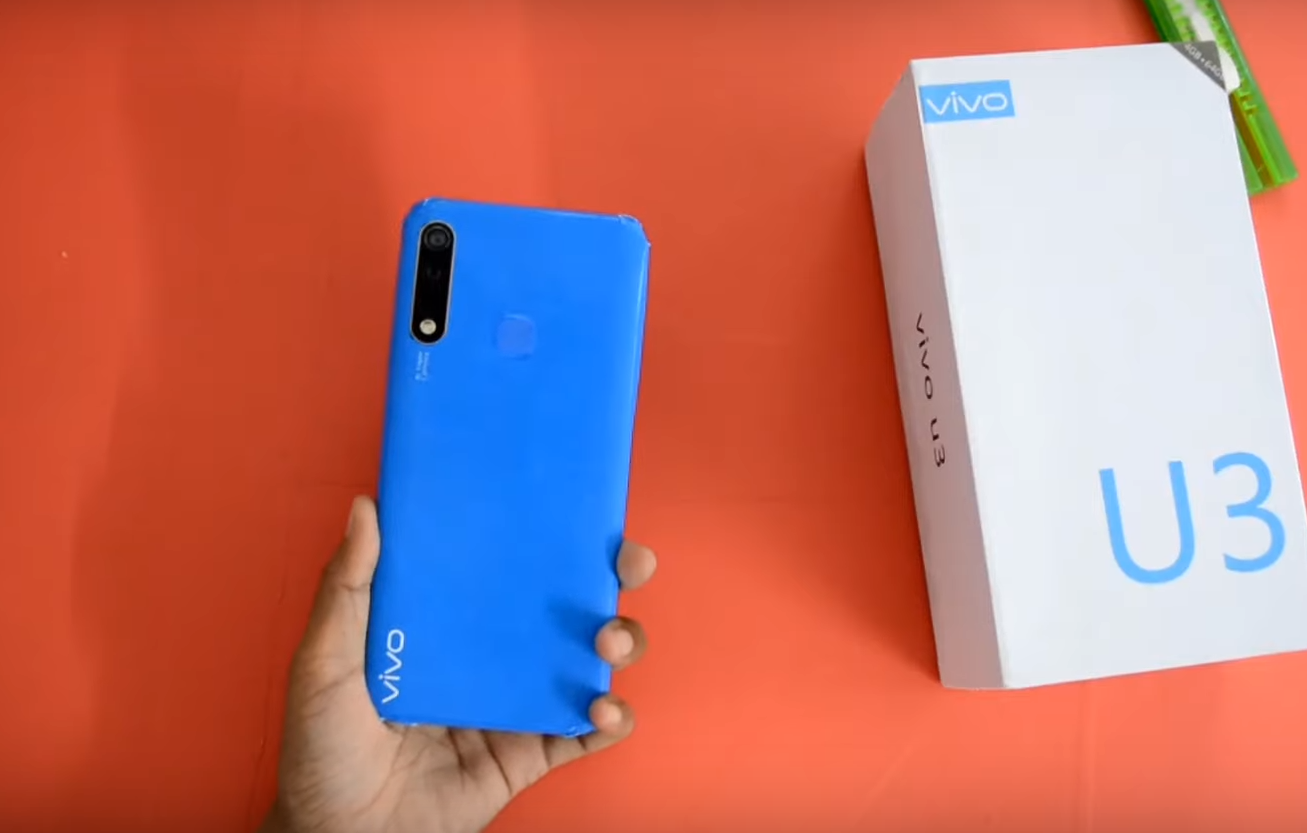
The world of mobile technologies is changing very rapidly and in 2019 it is difficult to surprise someone with both crazy technology and inexpensive Chinese devices. Today, more than ever, users are really interested in the "stuffing" of new gadgets and try to choose the one that will be ideal in terms of price / quality. It is also interesting that the level of trust in Chinese manufacturers has grown significantly, and not from scratch, because the companies were really able not only to surprise with their characteristics, but also to raise the quality bar to the level of European competitors.
However, it seems that this stage is gradually beginning to fade into the past. I recall the statement of the CEO of Xiaomi that the company is going to get rid of the stamp of a "cheap" manufacturer. And the first real evidence is already visible - a review of the Vivo U3 smartphone with the main characteristics in practice proves that one of the most popular manufacturers in the Middle Kingdom keeps its word (the key competitors Redmi Note 8 and Redmi 8 turned out to be worse in almost all respects and at the same time more expensive).At the same time, it is Vivo, thanks to its innovative solutions and pleasant pricing policy, that can take the lead in the budget segment.
Content [Hide]
Competition
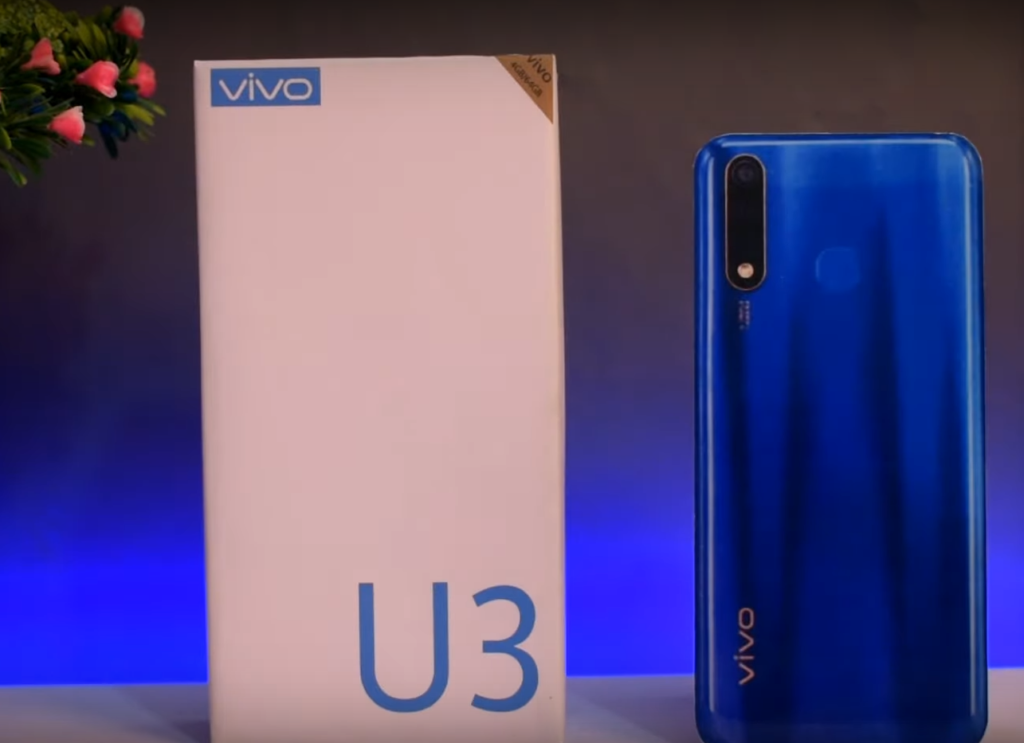
No matter what anyone says, the growing competition between Vivo and Xiaomi is visible to the naked eye. At the same time, many world communities speak about Vivo's decision to play on dumping while the competitor is on the wave of success, and continues to break sales records (even inflating price tags). It is interesting that the "competition" is extremely beneficial for ordinary buyers, because in addition to the fact that the new product is better than the eminent competitor (in terms of cameras, processor, screen sizes), it is also very affordable - the minimum configuration will cost $140, and the top one will cost $170 (in China). The most curious thing is that these price tags are even lower than previous Vivo models, which started at $200.
New design

Official sales in China began on October 24, so almost everything is already known about the smartphone (it is worth recognizing that the manufacturer did not try too hard to hide this information). As expected, the smartphone turned out to be typical of modern Chinese gadgets - a large screen, interesting color schemes, a teardrop-shaped camera cutout and, of course, a vertical strip of cameras. However, upon first acquaintance, the phone does not cause a feeling of cheapness or an overly boring design - the case looks quite fresh and impressive, although predictable.
At the first acquaintance with the novelty, for some reason, the edges of the device and the chin immediately catch the eye.But at the same time, you can’t call them wide - everything is within the framework of modern fashion, and the manufacturer himself is probably to blame here, choosing not the most successful wallpapers for the teaser photos. In life, a smartphone looks quite ordinary, so this is worth considering when buying a gadget via the Internet.
The body material is plastic, which is expected for such a price, but outwardly the smartphone looks even more expensive, largely due to the gradient transitions on the back. In total, three color variations are available - classic black (does not look the best), stylish green and popular blue.
The front of the smartphone has a large screen, above which there is a teardrop-shaped camera cutout in the center, and a small stroke of the chin at the bottom.
On the right side panel are the volume rockers, and below them is the power button. There are no buttons on the left side.
On the back, the phone has a strip of camera sensors (three sensors and an LED flash) in the upper left corner. A little to the right of them is a fingerprint scanner, so many may not like it, although this can hardly be called a minus. Going even lower from the triple camera, you can see the vertical inscription “Vivo” - nothing unusual, but it looks good (especially on the green and blue versions with gradient transitions).
Interestingly, all connectors are located on the bottom, including USB, and a 3.5 mini jack for audio. Next to them are cutouts for a microphone and speaker.
Of the important, it is worth recalling once again that in life Vivo U3 is quite different from the images shown in official presentations and videos.
Camera features
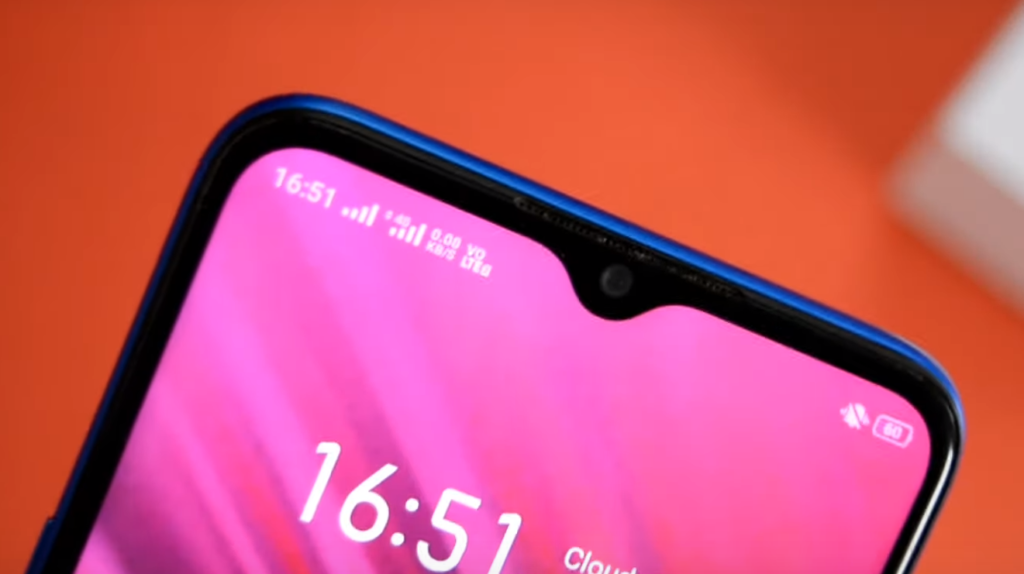
Budget smartphones always raise some concerns in terms of the quality of their cameras, because good optics cannot be cheap.However, in recent years, mobile phone developers have finally managed to find a compromise between affordable price and sensor capabilities, thanks in large part to new technologies and proper optimization. As for the Vivo U3, everything is very good here, given the initial cost of the device.
So, the smartphone has a triple camera of 16, 8 and 2 megapixels, more about each of them below:
- The 16 MP module (f / 1.78 aperture) is expectedly the main sensor and supports software such as Super Night Mode 2.0 and the indispensable HDR function. There is autofocus and face detection function;
- The 8 MP module (f / 2.4 aperture) is ultra wide-angle and is designed for shooting large companies, large objects, and everything that the main camera is not able to cover;
- The 2 MP module (f/2.4 aperture) is the so-called depth sensor or macro camera capable of taking pictures from record-breaking short distances from 2 cm.
It is worth saying that, despite the price tag, the device shoots well not only during the day, but in medium light conditions. Photos are bright and vibrant with a good level of detail. And to the question of how Vivo U3 takes pictures at night, the answer is rather unexpected - much better than the main competitors, largely due to the Super Night Mode 2.0 night shooting function and good aperture transmission.
With the front camera, everything is completely wonderful - it is not only not worse than the main camera, but even surpasses it. Yes, and a 16 MP sensor with f / 2.0 aperture, this is rather an average level (in the popular Xiaomi Redmi 8, for example, they limited themselves to a modest 8 MP sensor).
Video can be shot in a comfortable 1080p resolution at 30fps (both on the main and selfie cameras).
Making a brief conclusion about the cameras, we can say with confidence that the u3 may well become one of the most interesting devices in the budget segment of the outgoing 2019. Support for modern technologies, excellent sensor balance and good lens throughput, together with an excellent selfie camera, make it very attractive for those who cannot imagine life without photos and want to upgrade their device with minimal capital investment.
unexpectedly powerful
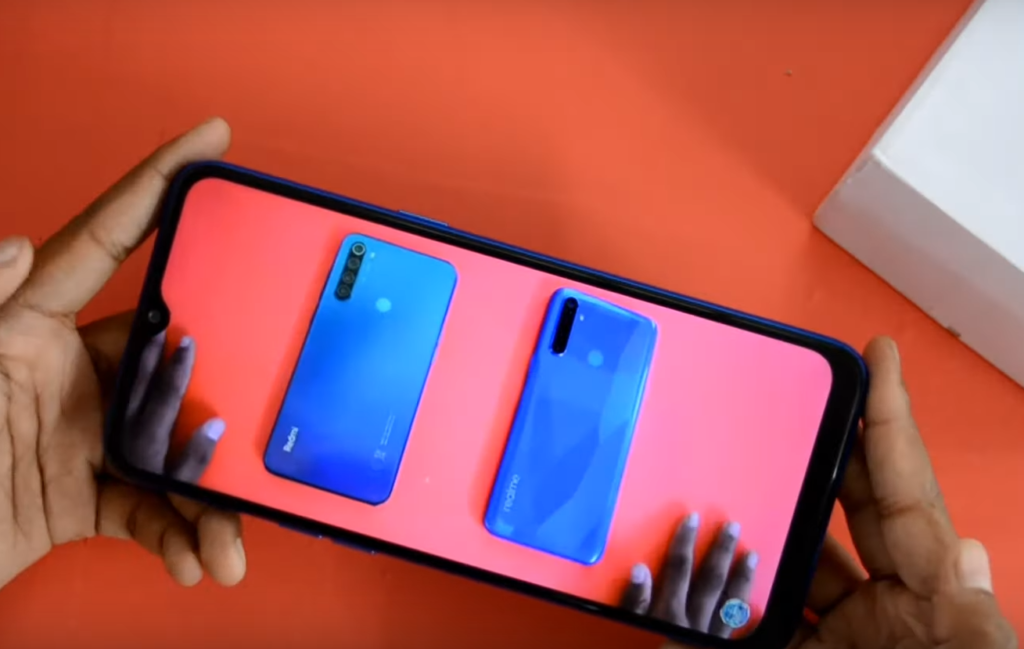
As a general rule, if a smartphone costs less than $200, but has good cameras and a large screen, you should expect poor performance in terms of performance. But with Vivo U3 2019, things are not so simple. Obviously, the model was created as a “killer” of redmiphones and one should have expected some “highlights” and features, but in practice everything turned out to be much better - the novelty has, albeit a little, but still a more powerful and modern Qualcomm Snapdragon 675 processor with Adreno graphics 612 (against Snapdragon 439 in G8 and Snapdragon 665 with Adreno 610 in note 8).
Performance
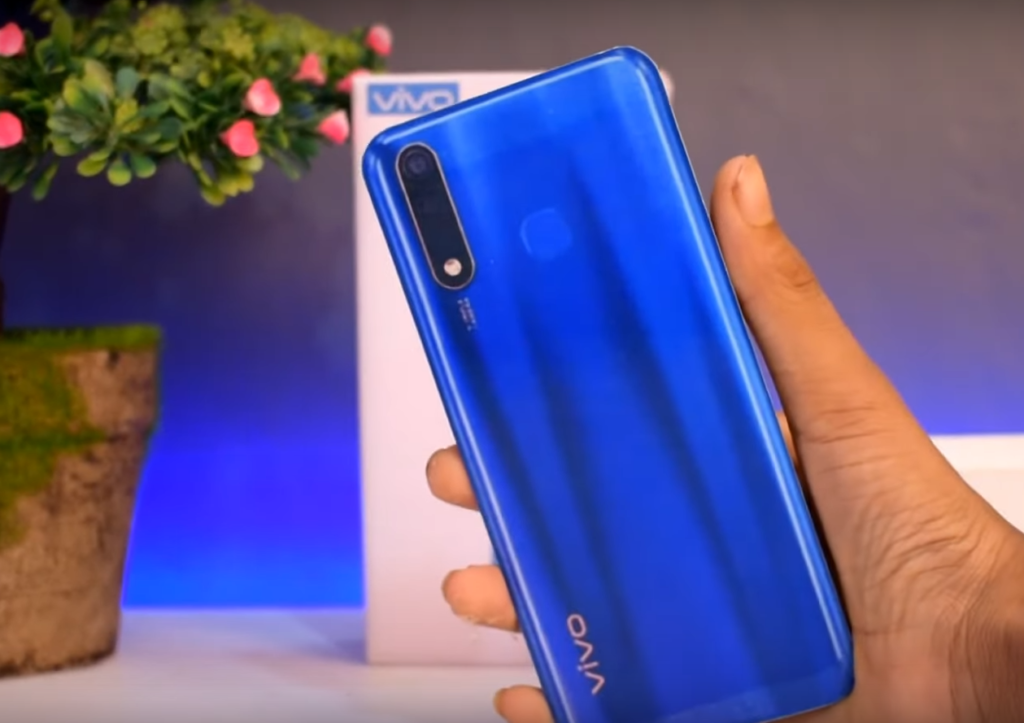
The budget segment today is a real ring for world leaders in smartphone sales, because it is here that a good choice of processors and RAM determines not only the high speed of the device, but also its attractiveness for gamers who choose a device for active games. Needless to say, although the level of hardware in smartphones today is high enough and suitable for most everyday tasks, every day more and more people begin to pay attention to the characteristics, even if they choose a phone for a selfie - no one wants to overpay, given the huge choice and high competition in the niche.
Vivo u3 is equipped with the fourth generation 11nm Snapdragon 675 processor (developed in 2018), which was originally positioned as a solution for mid-range phones. Inside the “dragon” lies the Kryo 460 chipset which has eight cores – two with a clock speed of 2 GHz and six power-efficient cores with a frequency of 1.7 GHz. The 6th generation Adreno 612 GPU has good performance (30% more powerful than its predecessor from the Snapdragon 670 pair) and supports the OpenGL ES 3.2, Vulkan and Open CL APIs. It is also worth noting separately that this 675th model can work with a screen refresh rate of 120 Hz, which was previously possible only on top chipsets and flagships of the Snapdragon 845 level.
Separately, it is worth noting that the Snapdragon 675 received advanced photo processing capabilities, which allows it to work with three cameras and use the previously unavailable functions of 5x optical zoom, slow motion video recording, create images with a blur effect in real time and take ultra wide angle shots. In addition, a high-speed X12 LTE modem and Wi-FI 802.11 a / b / g / n / ac / n operating at a frequency of 5 GHz have also been added to the number of innovations. There is also NFC support in the potentialities, but this interface will not be in U3.
The smartphone will be delivered in two variations of RAM - with 4 and 6 GB, which looks like a fairy tale for a price of $ 140-170. Speaking frankly, the 6 GB model looks very attractive at all, given that with such indicators, the smartphone will easily cope with most programs and even new games, retaining its potential for some time after purchase.
According to the manufacturer, the U3 scores about 180,000 points in the popular AnTuTu benchmark.In addition, the phone has a special function for optimizing resources during the game - Multi-Turbo.
Summing up, we can state that the engineers of the Chinese mobile giant did an excellent job with this item too - however, for Vivo, this trend has been starting to strengthen tightly for more than a year, which cannot but rejoice. In games, the smartphone will be able to show decent results, especially considering that Qualcomm is actively collaborating with the creators of such popular platforms as Unity, Unreal, Messiah and NeoX.
storage
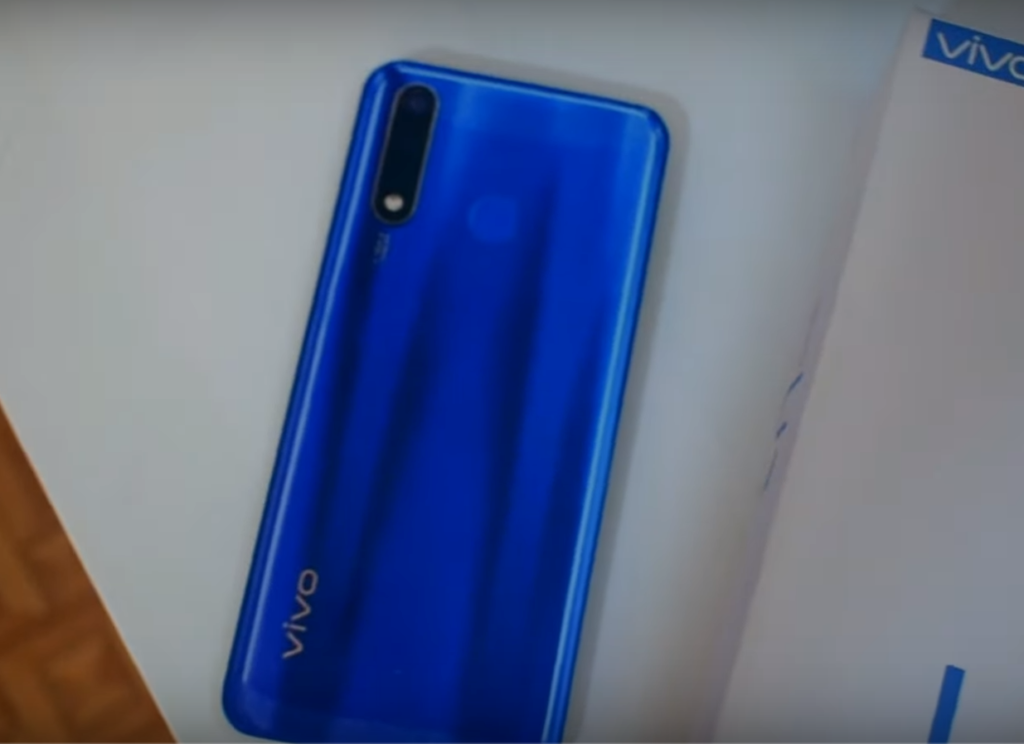
Releasing a smartphone in 2019 that should become the “killer” of the popular series of competitor phones with just one ROM variation is a rather strange decision. However, this is exactly what the Chinese company did, equipping its new products with 64 GB of internal memory. True, it is worth considering that the gadget has a slot for an external SD memory card, so that everyone can increase the storage capacity by simply choosing the right card up to 256 GB.
Operating system
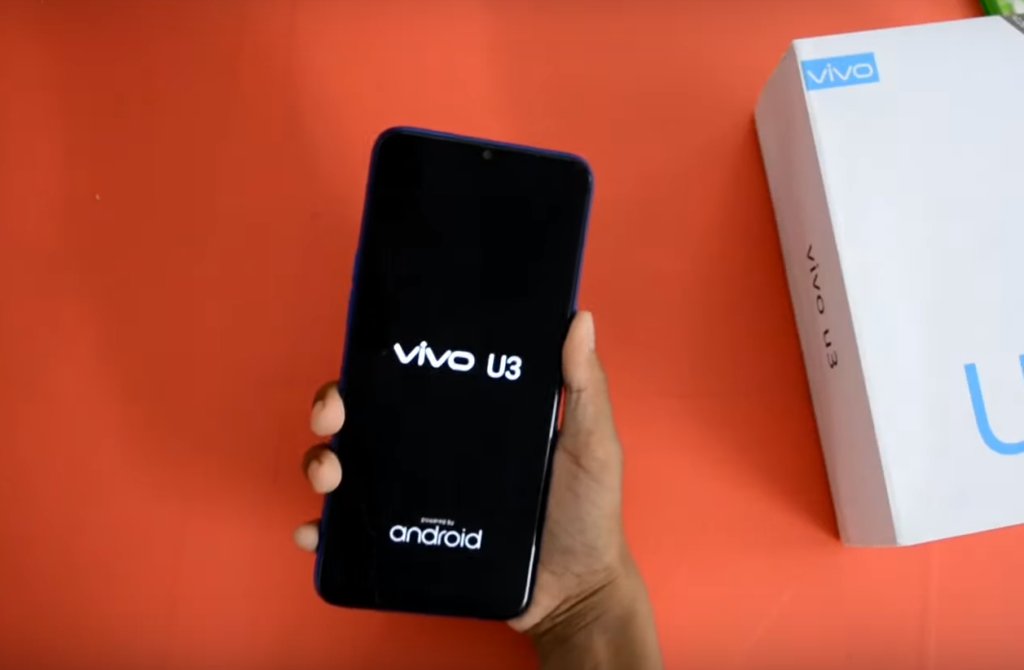
Nothing unexpected happened here - Vivo plans to release smartphones "out of the box" based on Android 9.0 (Pie), although it will not be a pure android, but with a proprietary Funtouch 9.0 shell. There is not much to say about Funtouch 9.0 yet, but according to the developers, it includes a whole host of innovations (about 400 improvements, new features and optimization fixes in total), including an updated interface, a redesigned gesture system, new application icons, and even updates to Jovi Smart Voice Assistant (voice assistant).
Screen
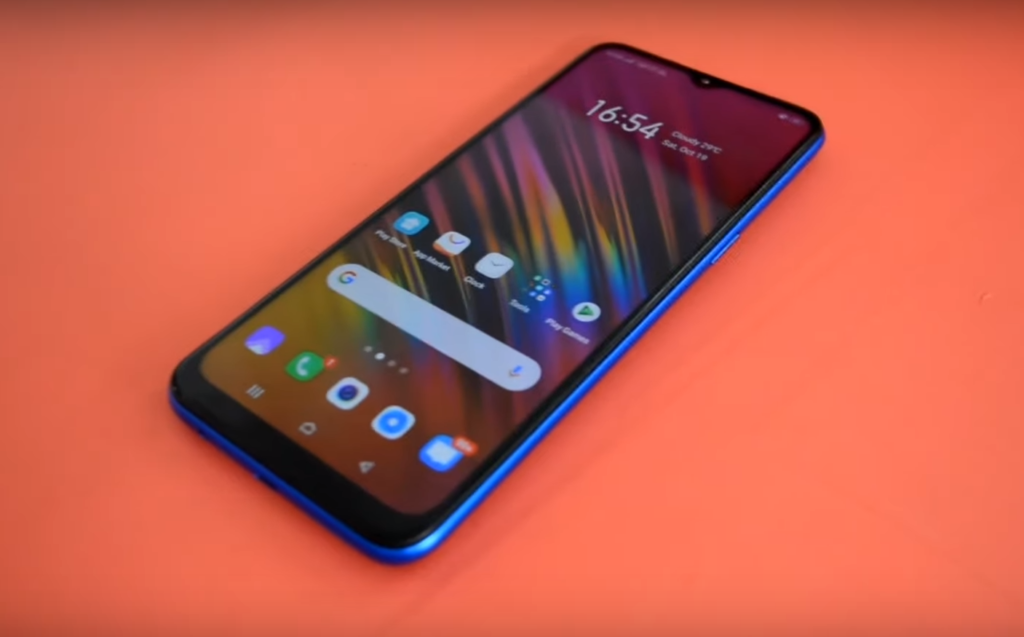
Today, smartphone displays can boast of excellent quality, but fashion takes its toll, and everyone wants to get a new product with a larger diagonal and a more detailed screen.Not the last role is played by the useful area, as well as the absence of frames, eyebrows and chin - it is difficult to please everyone at once, but the variety of models makes it easier to choose.
As for the u3, the device received a fairly large 6.53-inch IPS LCD capacitive screen (FullHD +). The usable display area was 84.4%, which is slightly less than established standards. The aspect ratio is 19.5:9.
But pleases with a screen resolution of 1080 by 2340 pixels and a density of 395 ppi, which contributes to excellent color reproduction and detailing of a wide variety of images and videos. It is worth saying that for the declared price, these are very worthy characteristics.
If there is an item “for watching movies” in the selection criteria, then this Vivo model will fit just fine, because in addition to a large screen with a “live image” and a high-quality picture, the phone is surprisingly well in the hand and does not slip, which makes it possible to use it as at home and on the go.
autonomy
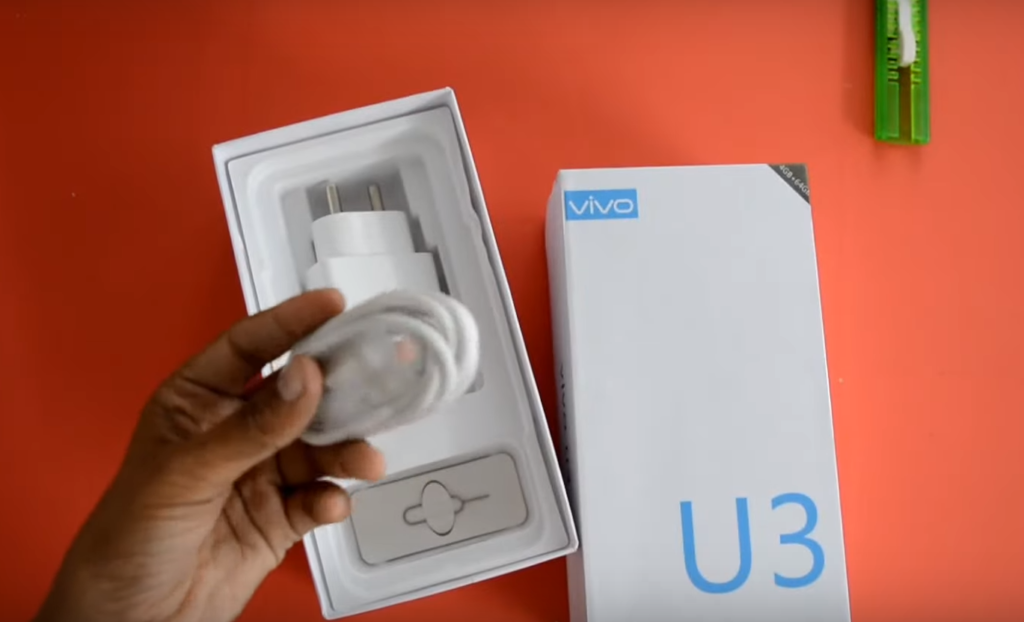
It would seem that this is the point where the fly in the ointment from Vivo should be covered. But this is not so, because in addition to the fact that the phone received a good Li-pol-battery (non-removable) for 5000 mAh (it is worth remembering that the device is equipped with a rather economical processor), it also has the possibility of 18-watt fast charging.
You can find fault, perhaps, only with the fact that the smartphone still uses Micro USB, and not tipe c. However, we can safely state that everything is in order with the autonomy of the gadget and it can last 3-4 days without problems, subject to normal use.
Technologies, communication standards, dimensions
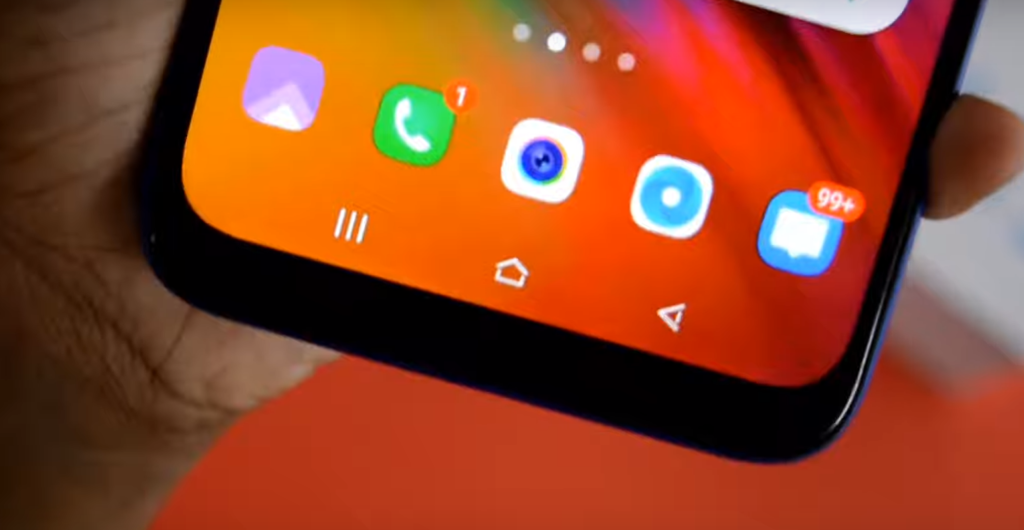
A rather important section that many users ignore and completely in vain.After all, it is here that you can learn about such moments as the size of the device, its high-speed capabilities for transmitting / receiving data, the availability of the latest technologies and the corny version of Wi-Fi and bluetooth. So, u3:
- Wireless technologies: Wi-Fi 11 a/b/g/n/ac/n5GHz, Bluetooth 5.0, VoLTE;
- Network and Internet: 2G, CDMA, 3G, 4G;
- Navigation: GPS, A-GPS, GLONASS;
- Sensors: Fingerprint (rear), accelerometer, proximity, lighting, gyroscope, compass;
- Dimensions: 47 x 162.15 x 8.89 mm;
- Additionally: microUSB, Jack 3.5.
The model, as expected, did not receive NFC support, but it got a good Wi-Fi module, fast Bluetooth 5.0, a lot of necessary sensors and a 3.5 mm Jack connector.
Summing up
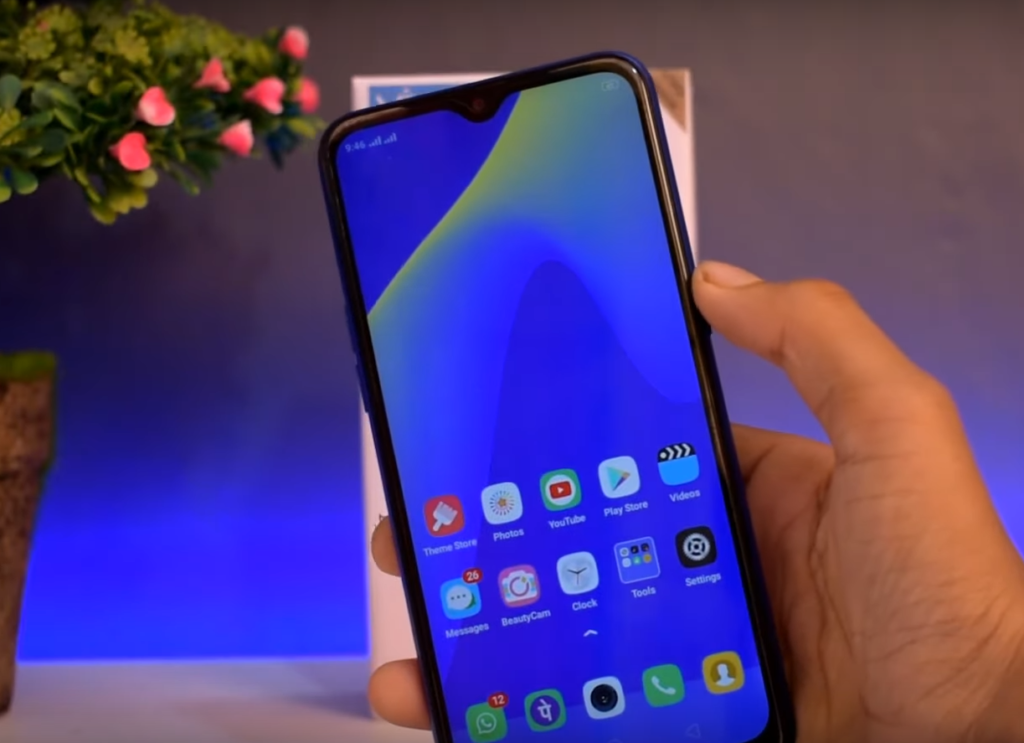
Vivo is one of the most recognizable and mainstream smartphone manufacturers in the world, although it does not ship much of its products to the West. However, in recent years, the number of interesting new products from the company has simply broken all records, ranging from a powerful and at the same time one of the most affordable gaming smartphones Vivo Nex S, and ending with the unusual Vivo Nex Dual Display with two screens. It is noteworthy that U3 could also enter this company if the developer keeps his word about the starting price.
What can we say about the novelty - this is a smartphone that has practically no flaws, with the exception of the rear fingerprint scanner and the lack of a tipe c. It is rare that a phone in the budget segment can boast such a perfect balance - excellent cameras, a large and bright display, an interesting design, sufficient power and good energy efficiency, do not forget about the autonomy of the device.Perhaps fans of pure android will not like the proprietary Funtouch 9.0 shell, but it is unlikely that you will be able to find something more interesting for such a price.
- Attractive price;
- Stylish design with gradient stripes (in blue and green colors);
- Powerful and economical processor;
- The quality of the cameras is at a decent level;
- The possibility of increasing the amount of memory due to an external flash card;
- Enviable autonomy;
- The presence of a mini jack 3.5 mm;
- Fast charging 18W;
- Android 9.0;
- Modern Wi-Fi module;
- Lies tightly in the hand;
- Big screen.
- Frames can be conspicuous;
- Just one variation of the internal storage;
- No NFC module;
- Lack of USB Type C;
- A smartphone in real life is different from official images.
Characteristics table:
| Model | Vivo U 3 |
|---|---|
| Operating system: | Android 9.0 (Pie) with Funtouch 9.0 shell |
| CPU: | Qualcomm Snapdragon 675 (2x2GHz and 6x1.7GHz) |
| Graphic arts: | Adreno 612 |
| Memory: | 4/64, 6/64 |
| Cameras: | main: 16 MP + 8 MP + 2 MP; front: 16 MP |
| Resolution and display size: | 1080 x 2340 pixels; diagonal 6.53 inches |
| Battery capacity: | 5000 mAh |
| Communication standards: | 2G, CDMA, 3G, 4G |
| Additionally: | microUSB 2.0, USB On-The-Go, Jack 3.5 |
| Dimensions: | 76.47 x 162.15 x 8.89 mm; Weight -193 g |
| Price: | 140-170$ |
Summing up the advantages and disadvantages, it immediately becomes clear that the smartphone turned out to be very successful, and most of its disadvantages are either not very significant, or even are the result of the owner's individual preferences. At the same time, it is also impossible to seriously scold a budget model with such characteristics for the lack of NFC, although of course the sensor would definitely not hurt (given that the processor supports its installation).As a conclusion, the device has excellent chances to become a new bestseller and compete with many popular models.
new entries
Categories
Useful
Popular Articles
-

Top ranking of the best and cheapest scooters up to 50cc in 2025
Views: 131655 -

Rating of the best soundproofing materials for an apartment in 2025
Views: 127696 -

Rating of cheap analogues of expensive medicines for flu and colds for 2025
Views: 124522 -

The best men's sneakers in 2025
Views: 124040 -

The Best Complex Vitamins in 2025
Views: 121944 -

Top ranking of the best smartwatches 2025 - price-quality ratio
Views: 114982 -

The best paint for gray hair - top rating 2025
Views: 113399 -

Ranking of the best wood paints for interior work in 2025
Views: 110323 -

Rating of the best spinning reels in 2025
Views: 105333 -

Ranking of the best sex dolls for men for 2025
Views: 104371 -

Ranking of the best action cameras from China in 2025
Views: 102220 -

The most effective calcium preparations for adults and children in 2025
Views: 102014









